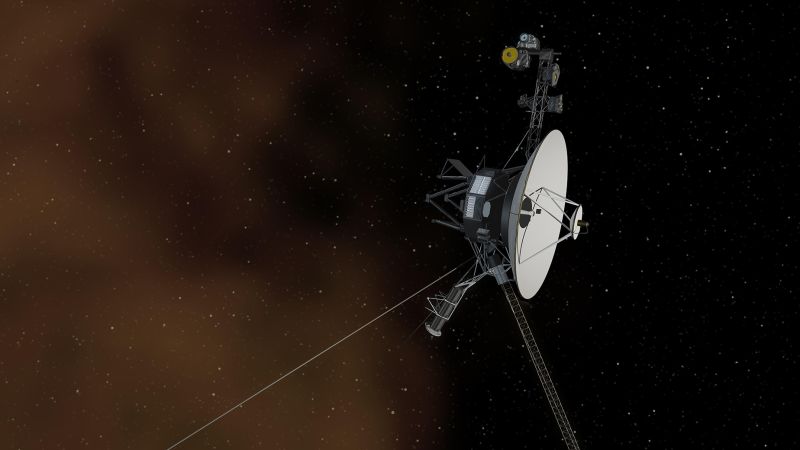- cross-posted to:
- [email protected]
- cross-posted to:
- [email protected]
Really incredible that the thrusters still function at all after all this time - and that it has any fuel left / usable fuel after all this time.
How expensive would it be to make similar spacecraft now?
Assuming it’s relatively cheap, what could we learn from sending out thousands today?
The voyager probes only got as far as they did because of their trajectory that got some massive (and rare) slingshots, it will take ages for the new horizons probe to get anywhere near as far.
We could probably spam missions to some other planets, who will pay for it though? We are not at the stage where an 'out of the box’s mission can do that I think?
you answered neither question
- Billions.
- Little to Nothing. Because they wouldn’t make it as far as fast as the Voyager probes because they got a massive gravitational assist from a rare alignment that only happens every 176 years. All the other planets needed to be aligned appropriately for this journey at this speed. New horizons may leave the solar system in 43 if we don’t lose contact. And they already want to shut the program down. NH is about 10000 km/h slower than Voyager 1.
Best to use targeted probes to explore things we haven’t before. Ask different questions and if they leave the solar system, good on them. But I’d prefer orbital data satellites around all the ocean moons in the outer solar system.
you answered both questions
Maybe I could have been more explicit. Without the planetary alignment that made the voyager probes possible an equivalent mission would be ridiculously expensive/impossible due to the fuel requirements (and wouldn’t be able to visit all of the planets)
If starship/new glen/the rocket lab one work, it might become more feasible.
Instead, sending smaller, simpler probes that just visit one planet/moon would be much more cost effective, but still expensive.
We have already got a lot of the low hanging planetary science fruit from existing missions. New missions would need new/novel sensors or need Landers/aircraft which make them much more expensive.
Even just a ‘standard’ interplanetary mission isn’t just an out of the box job like current earth satalites are becoming.
So comparing to New Horizons mission
- New Horizons mission cost is estimated to around 780mln in 2001-2017
- Voyager cost is estimated at 850mln in 1977, which is ~2.8bln in 2006 dollars
We could learn that we are intergalactic litter bugs. We should stick with fixing polluting our inner space.
Space is big enough that even if we tried to “pollute” it we could not. We would need Von Neumann self replicating probes to even stand a chance. But even then if we are talking intergalactic we wouldn’t register.
Yes, and a few broken down satellites in the ocean is but a mere drop in the bucket. Being irresponsible is irresponsible, no matter how you try to excuse it.
A drop in the bucket isn’t event close to a good understanding of how big space is. A satellite in the ocean is grossly misleading when it comes to the scope of space.
Maybe a single O2 molecule in the ocean might be closer but even then that’s not even close to the scope of space.
Space is big. So big that the light cone of our “pollution” can’t physically interact with most of it even if we did our best to “pollute” as much as we can and some alien species did their best to find that “pollution”. Space is so big that physics dictate the impossibility of our “pollution” interacting with most of space.
Fun fact this is why the chance of aliens visiting us here on earth is basically 0.
You can’t use earth scale thinking, that’s how big space is.
This all being said we should do our best to not pollute the earth. We should use earth scale thinking when it comes to earth.
Space is big. You just won’t believe how vastly, hugely, mind-bogglingly big it is. I mean, you may think it’s a long way down the road to the chemist’s, but that’s just peanuts to space.
Douglas Adams
There’s about 4.6*10^46 molecules in the ocean. There are about 8.5*10^47 cubic meters in a cubic light-year
Surprisingly close orders of magnitude
For reference, the closest next star system is 4.25 light years away. The diameter of our Galaxy is about 105 700 light years, with a thickness of about 1000 light years (much less than the diameter, since our Galaxy lies on a plane)
Huh. That’s crazy. And that’s just one cubic light year.
Now if we multiply that cubic light year to match the volume of space we have a similar comparison. Infinite oceans to sift through for a single molecule.
“Space” as a volume is probably infinite, but even just talking our local stellar neighborhood or even just the solar system and space is already ridiculously more empty and big than anything you could compare to on earth. With I guess the possible exception of high-precision vacuums in laboratories.
I’ve always enjoyed this video to give a perspective on size
I usually increase playback speed, it’s a bit slow at start.
Fun fact this is why the chance of aliens visiting us here on earth is basically 0.
You can’t use earth scale thinking, that’s how big space is.
But that is earth scale thinking. You know, in a “things heavier than air can’t fly” way.
It’s more of a “the speed of light is the cosmic speed limit” way of thinking. If you feel aliens are visiting earth you do you.
That’s what i meant. Even our civilization, with our limited understanding of physics, can think of theoretical workarounds.
Dunno if aliens are on earth. But that argument against it, is only guesstimating.
Holy shit just woke up and read the dumbest thing of the day, guaranteed.
Whoa, big move taking the goal post from outer space to our ocean. Weak.
Our first encounter is a littering fine from the neighbors overly aggressive HOA.
The only thing we can realistically pollute is our immediate orbit
Everything beyond would be impossible for us to pollute effectively even if we tried. You might not know this, but space is very very very big LMAO
Space is, like, SOOOOOO big, and stuff.
OK, Zaphod.
That headline could also be describing me and my fitness goals.
Speed!!
Finally far enough to safely engage ftl-warp drive.








